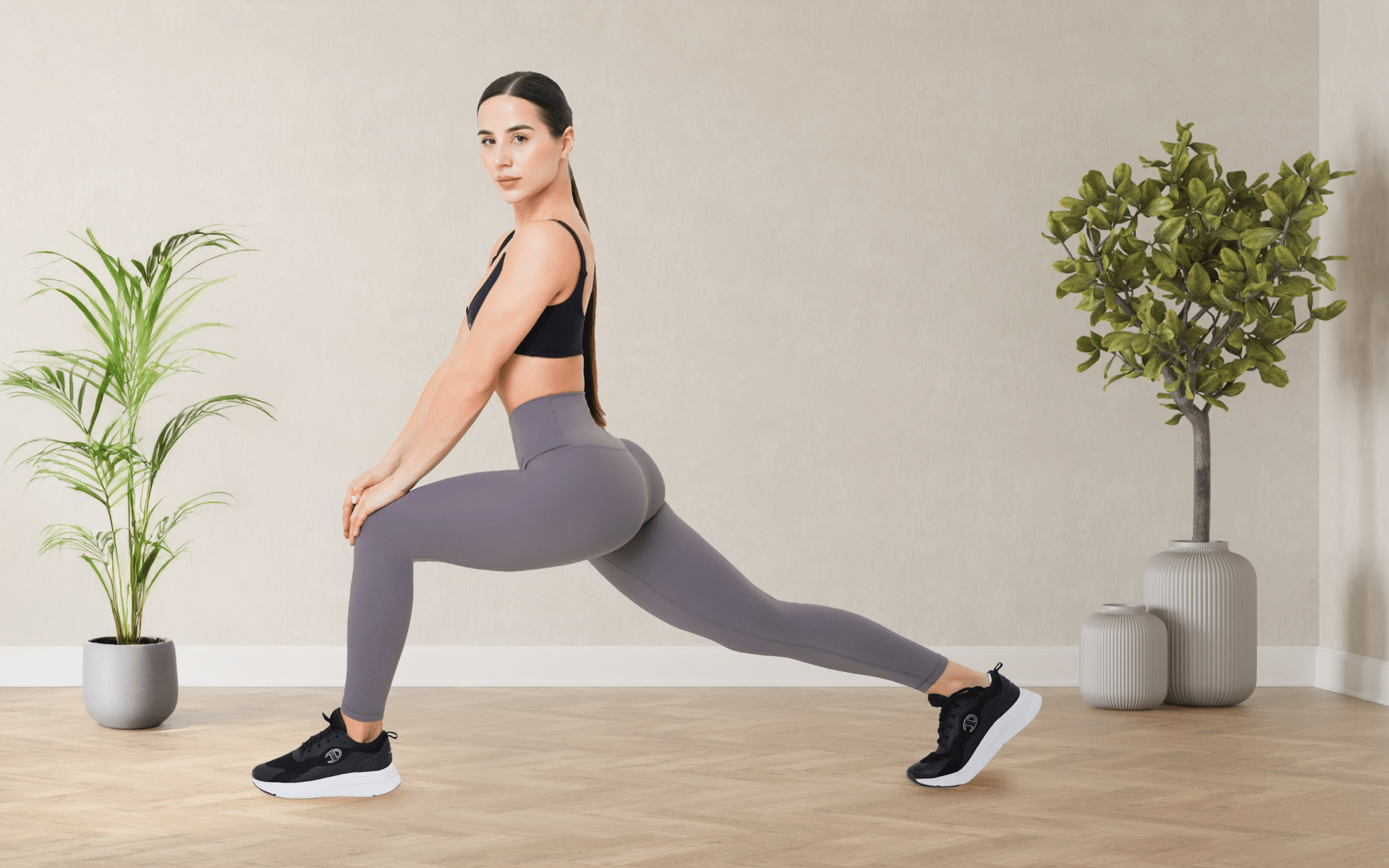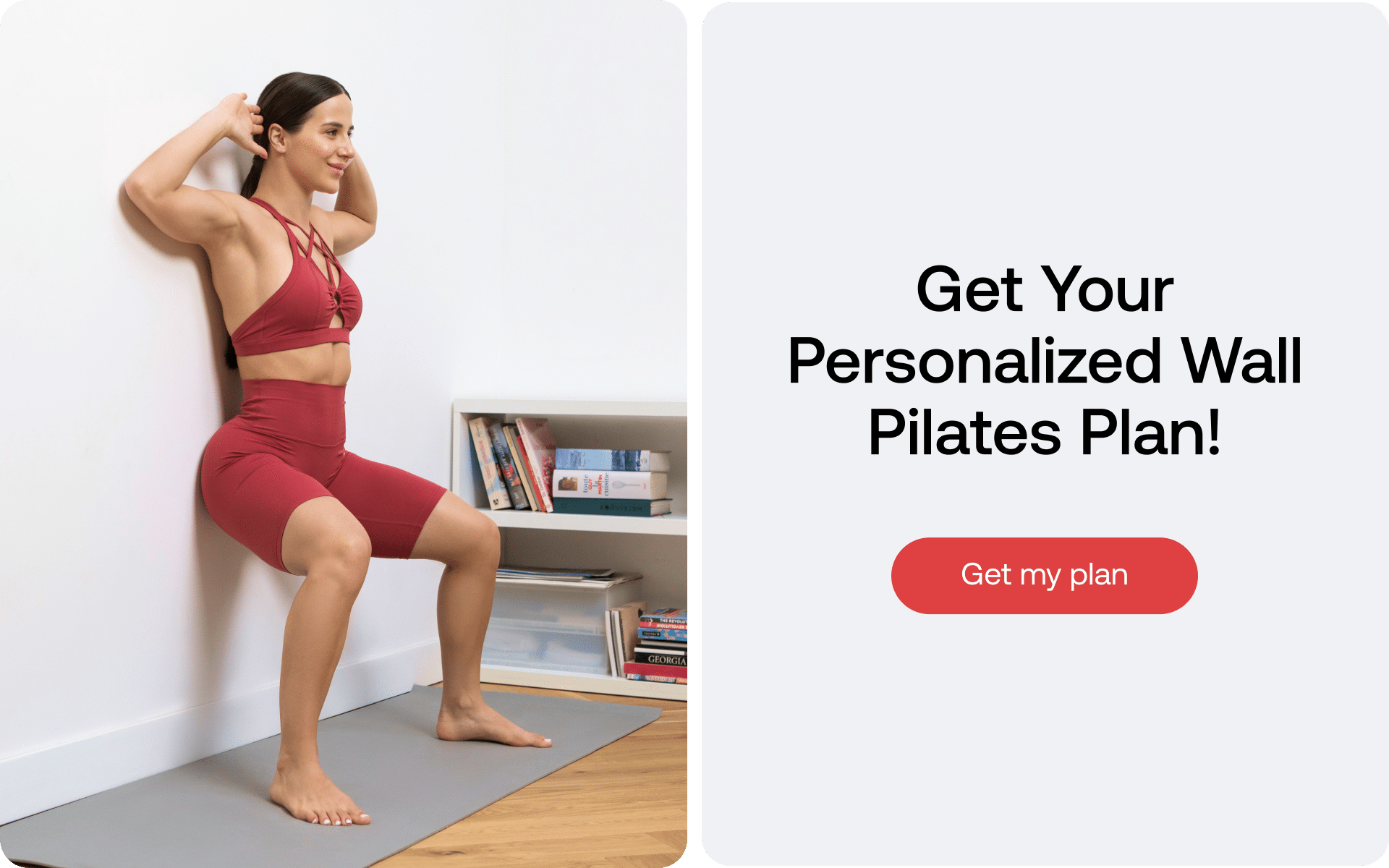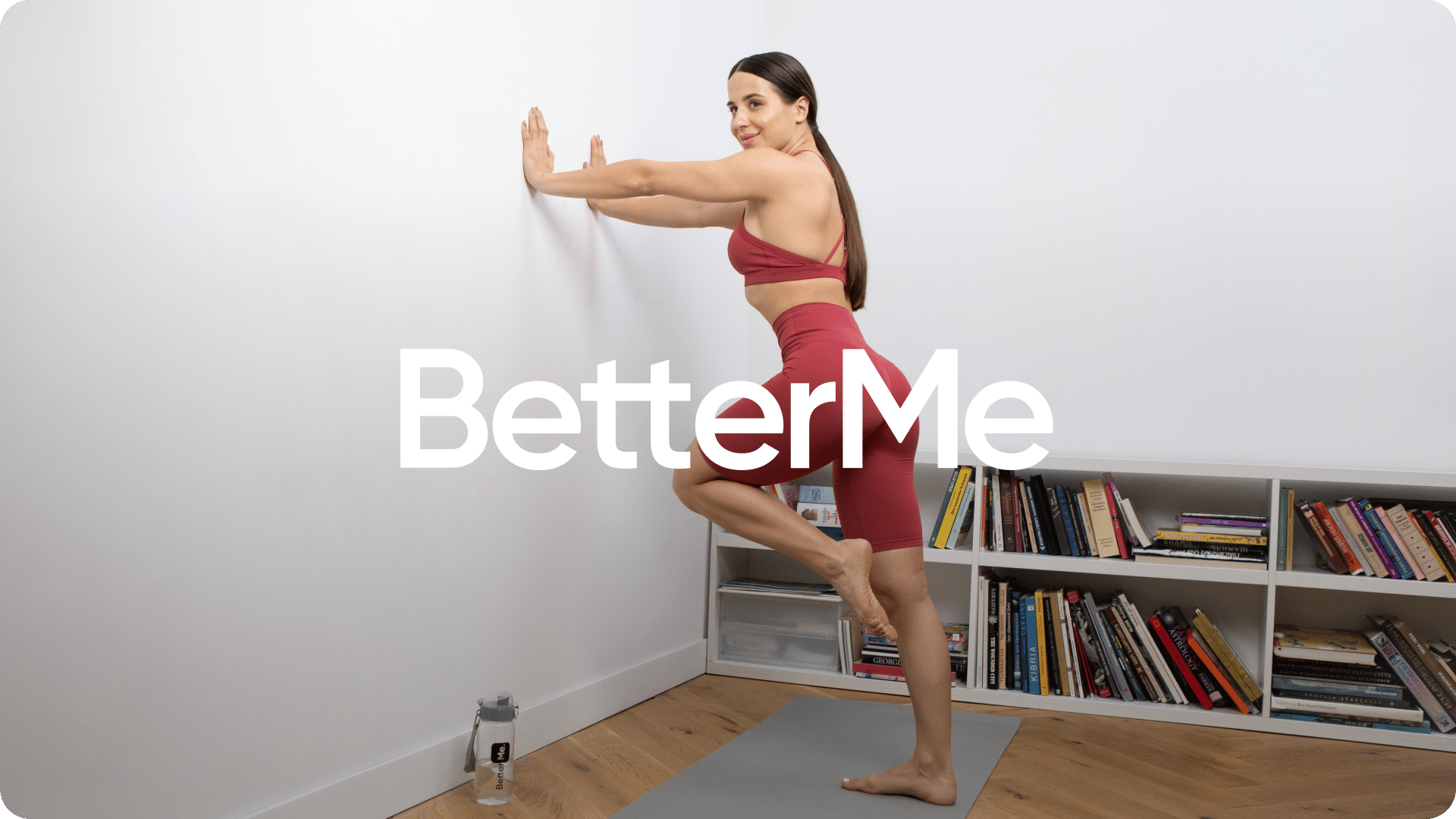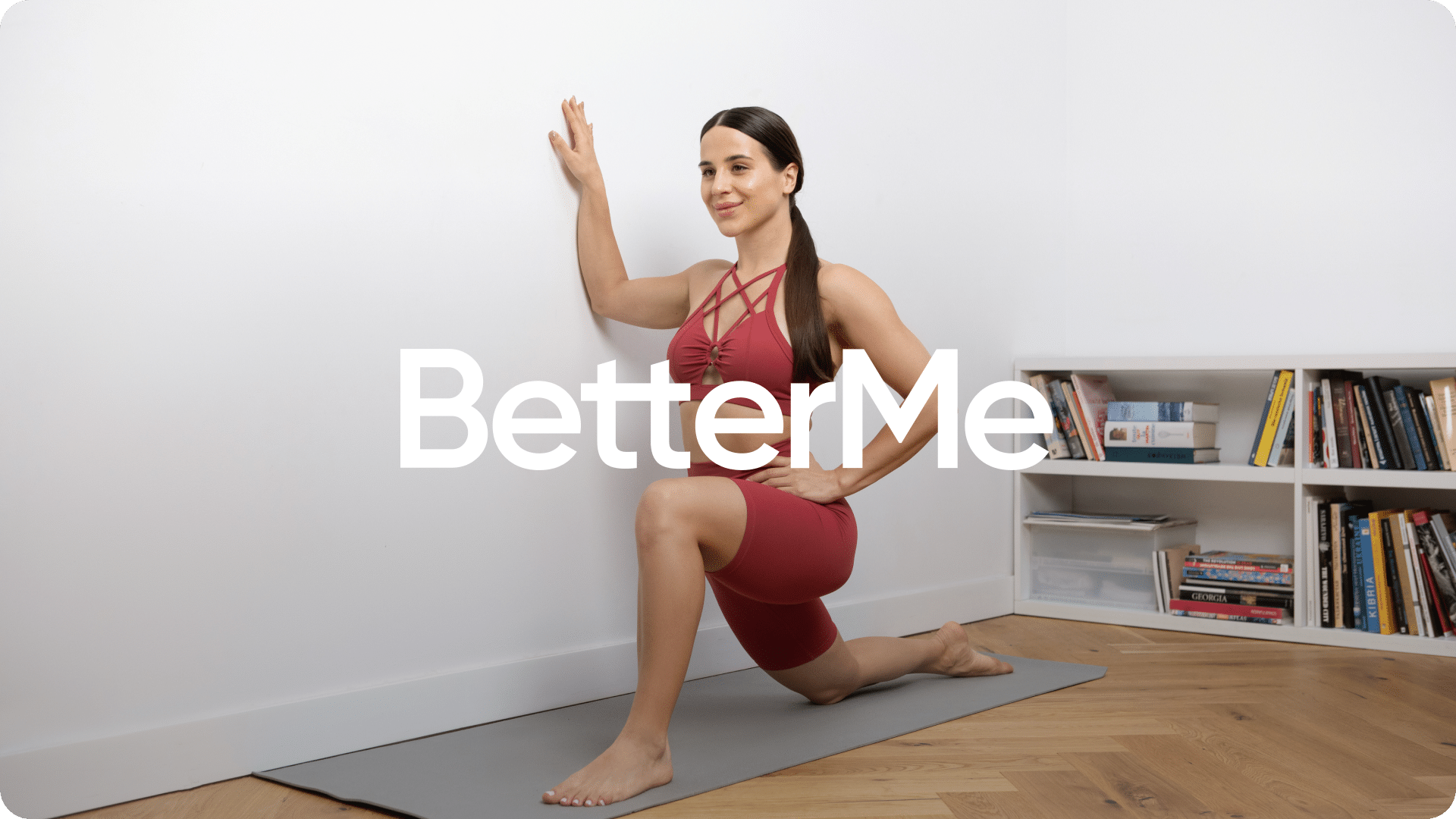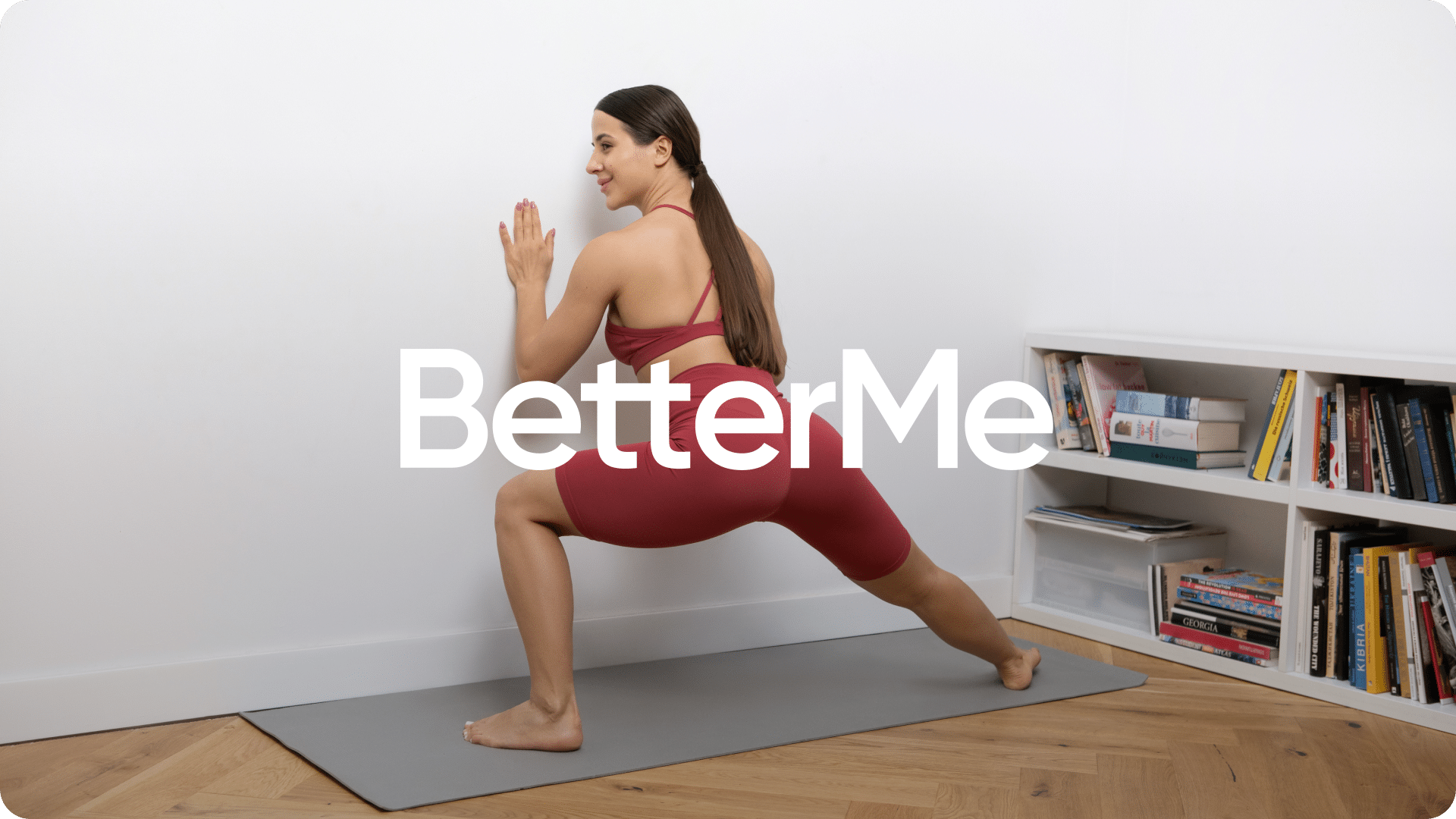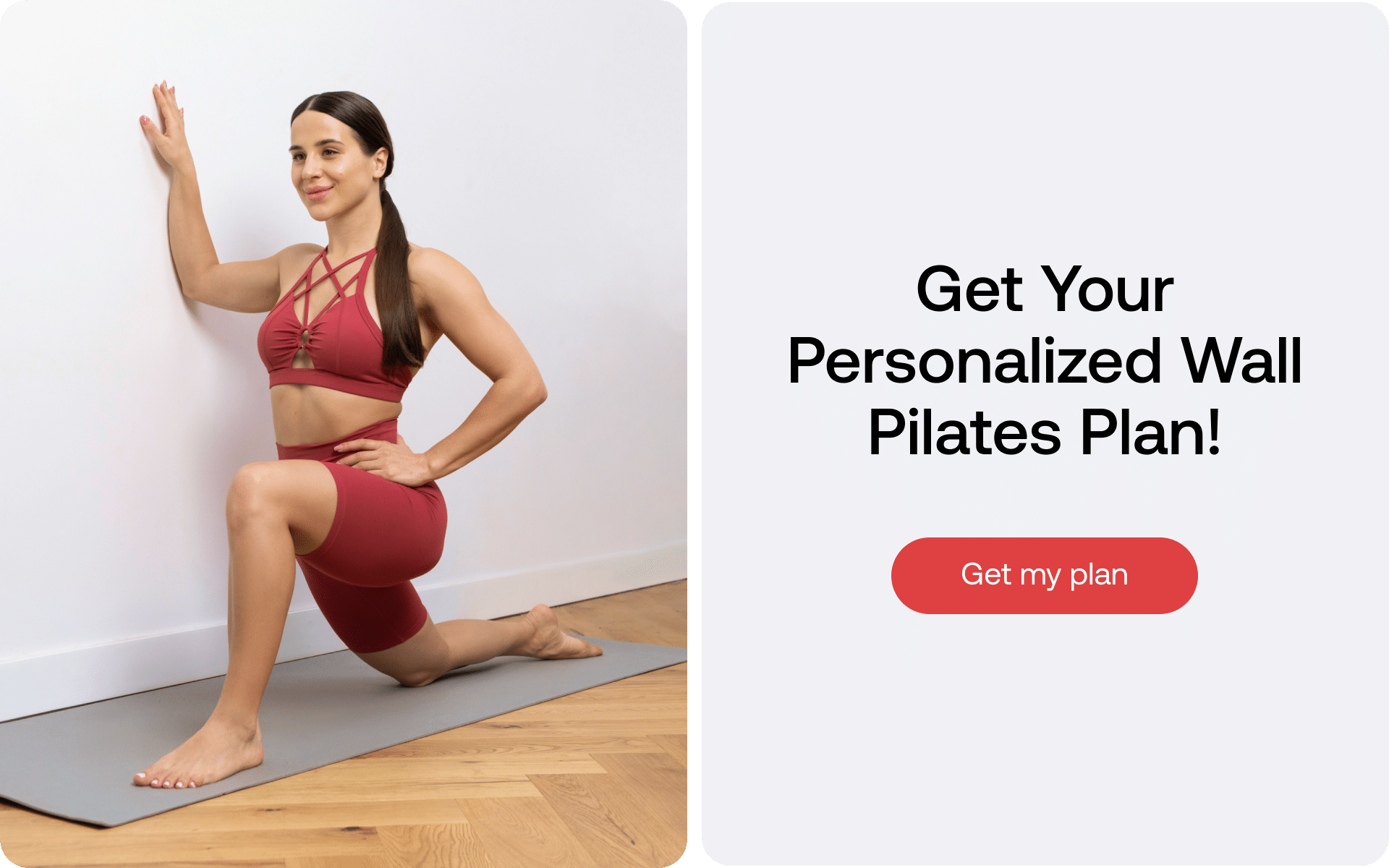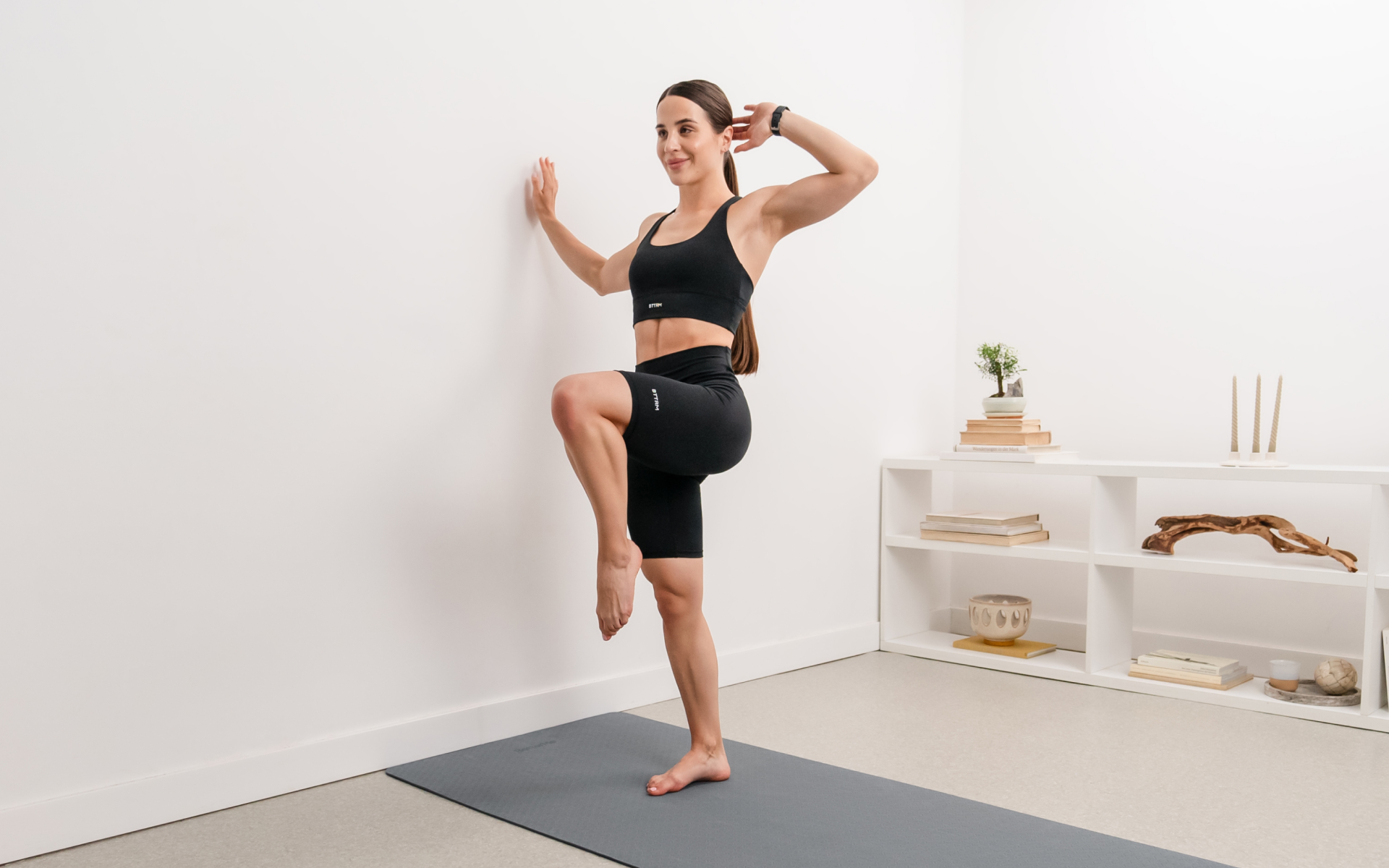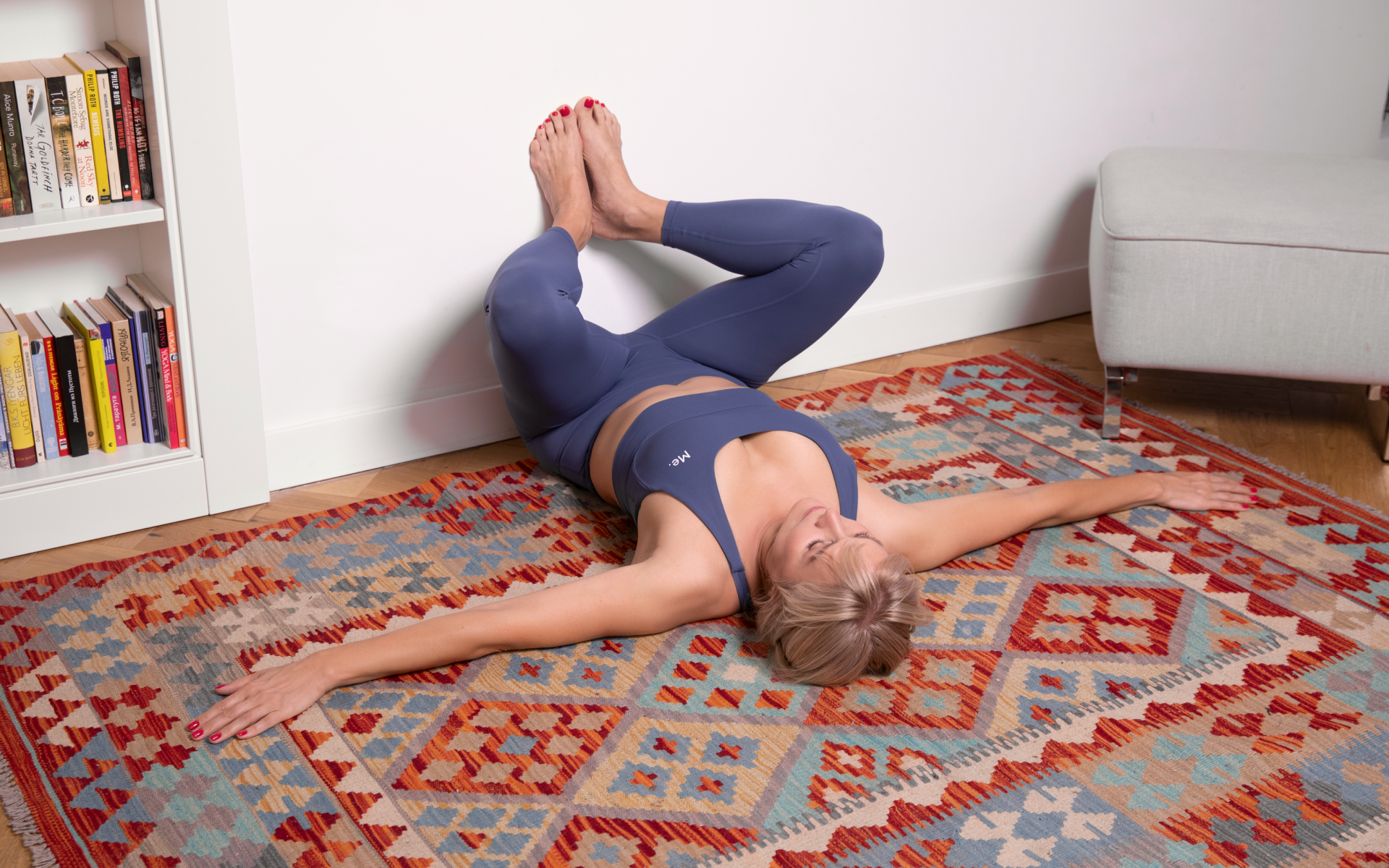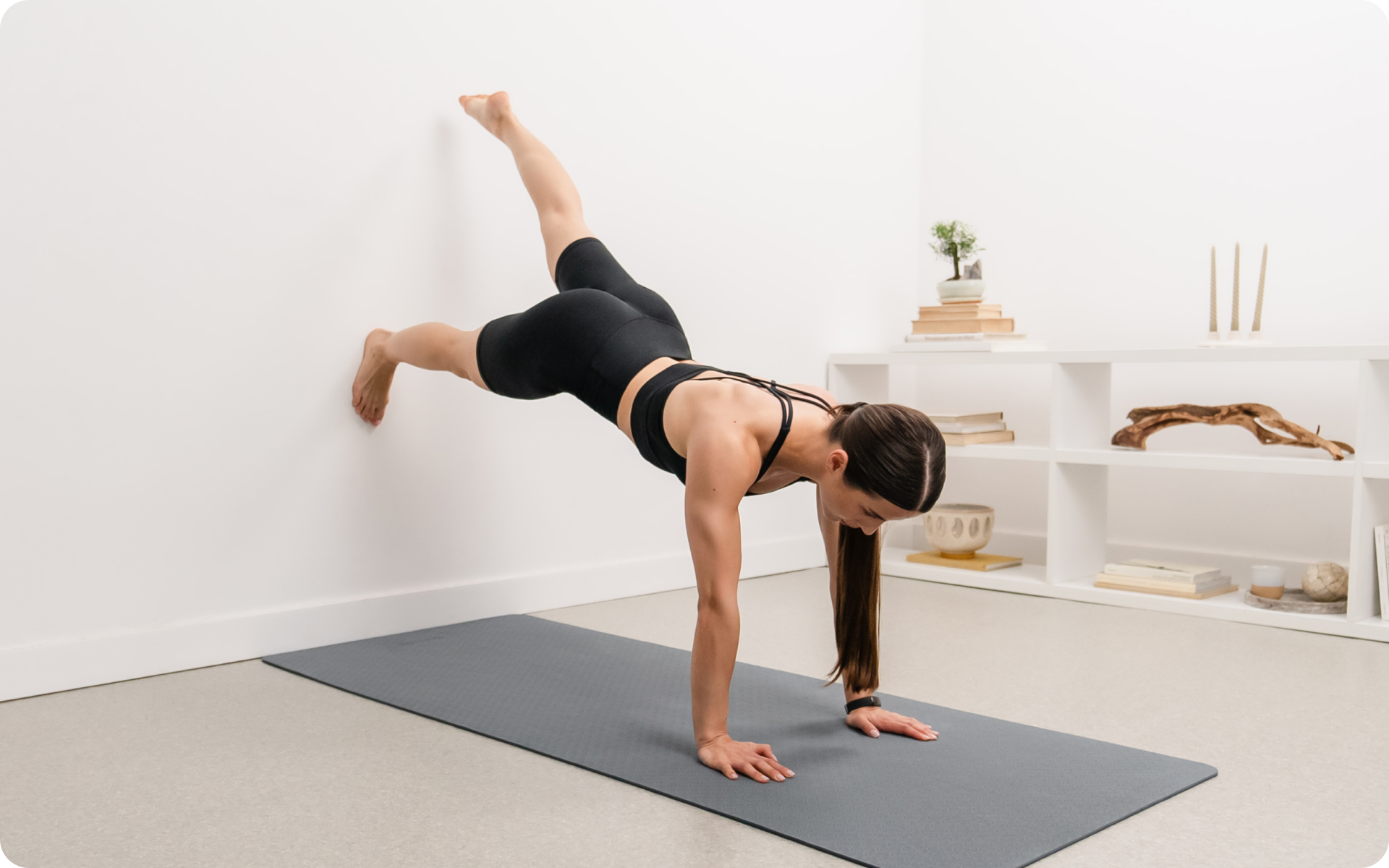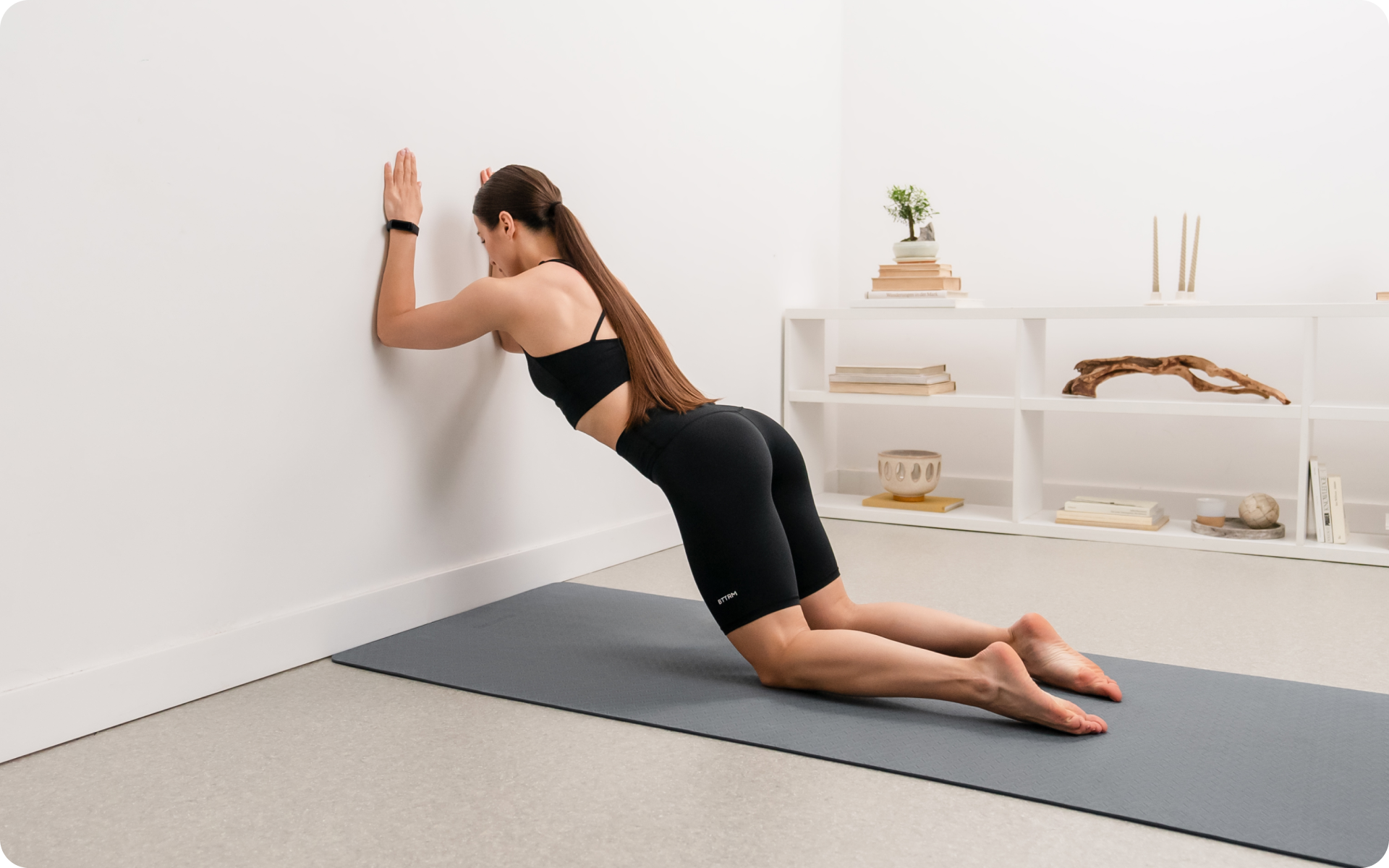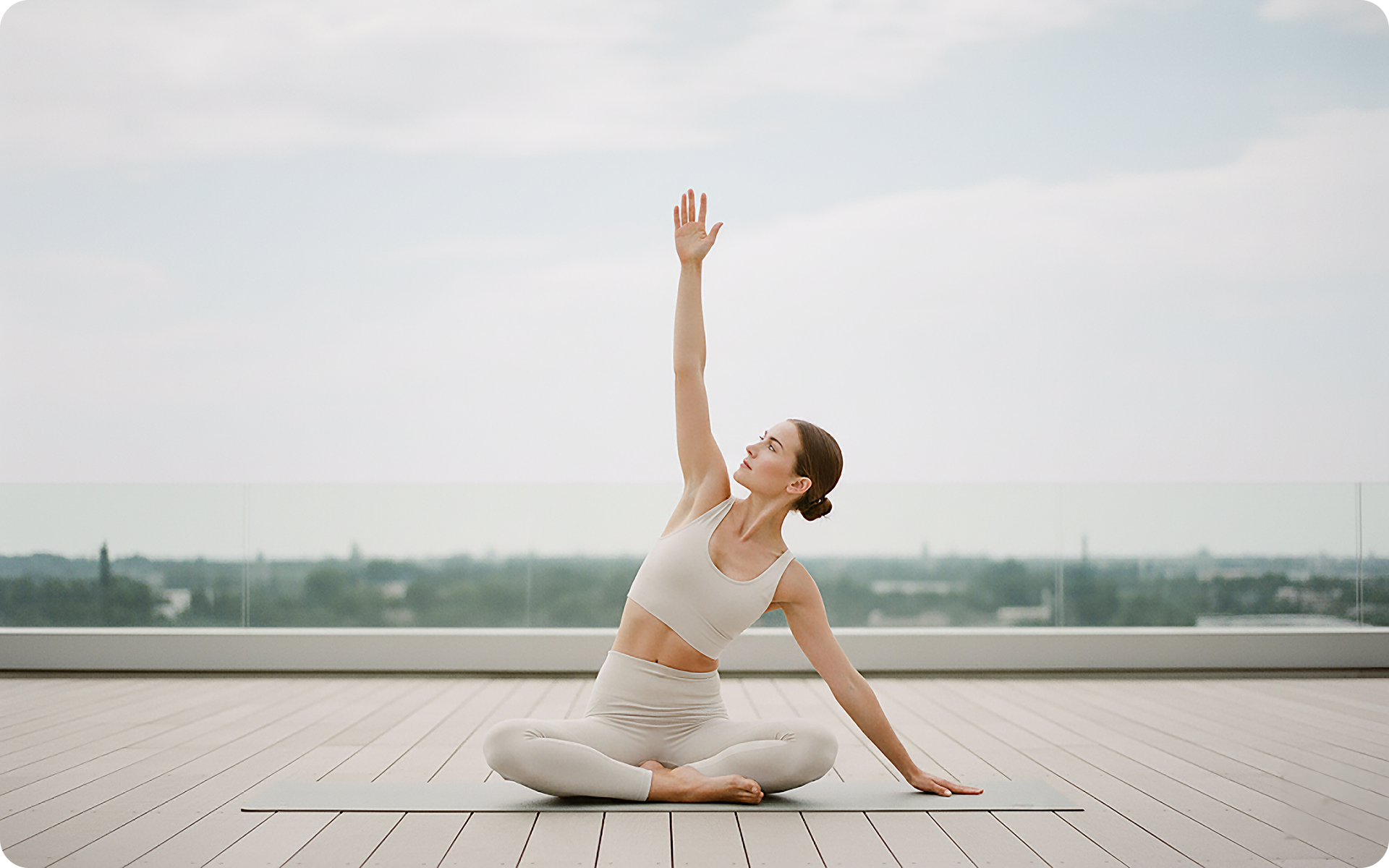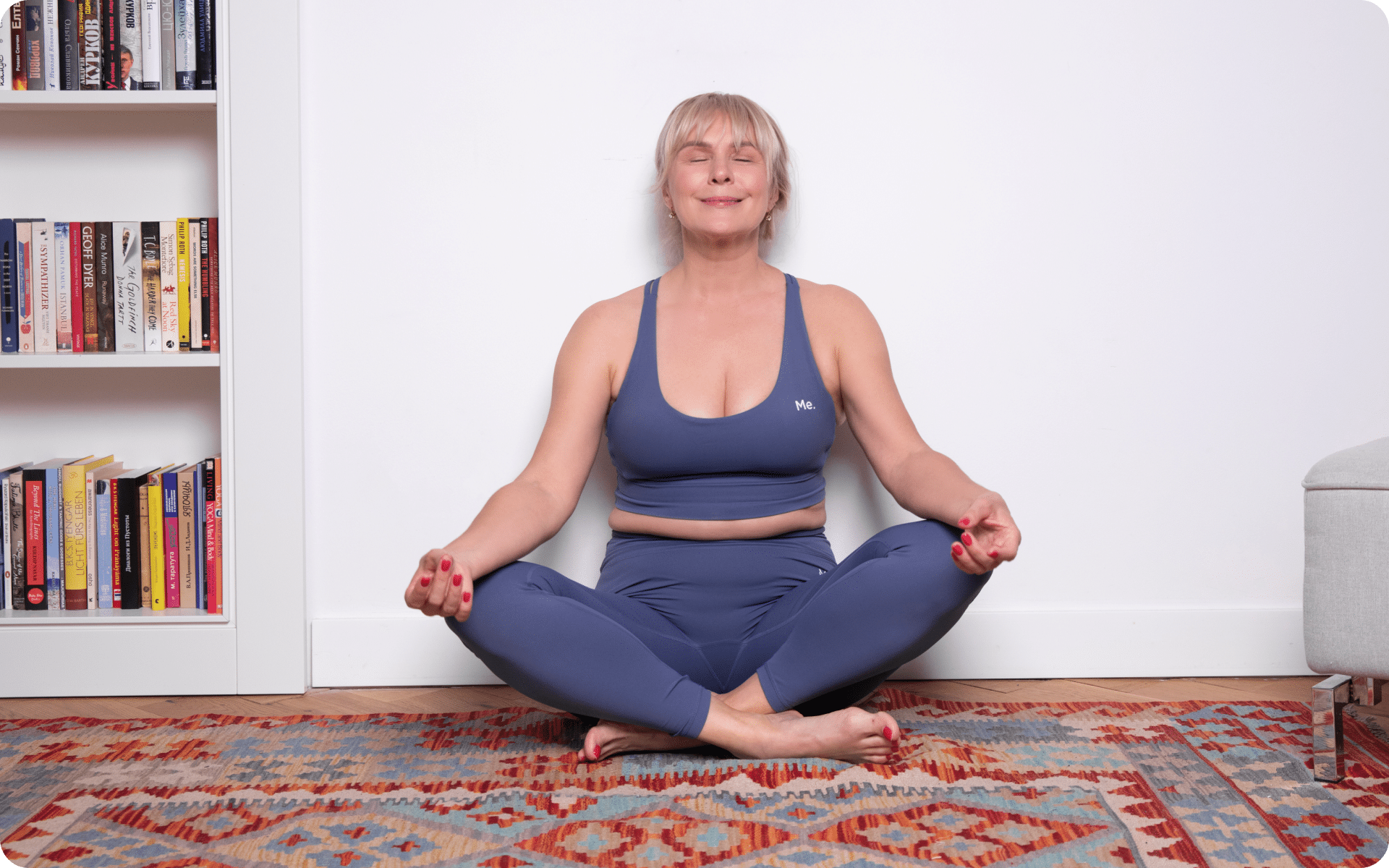Lunges are a pretty common movement in our daily lives. We may not give much thought to it, but unconsciously we are activating those muscles often each day. Everytime you kneel down to pick something up off the floor, you’re activating the muscles needed for a lunge. When you see a friendly baby crawling in the park, you can’t resist getting down on your knees and having a cute banter. These movements activate many of the same muscle groups required for lunges.
Excelling at lunges isn’t an easy task. One can always use the wall as a tool to master this technique. This article discusses a wall lunge and why it is one of the most effective and functional lower body exercises. Keep reading to discover some interesting insights!
What is a Wall Lunge?
A wall lunge is a bodyweight exercise that targets the glutes, quadriceps, and hamstrings (1). It is one of the lunge variations, where one foot is placed on the wall for an added anterior (forward) weight shift. This targets the front leg more, as compared to a traditional lunge, much like a Bulgarian split squat.
The steps to perform a wall lunge are:
- Stand one big step away from a wall with your back to it. Place the front part of your back foot up on the wall at hip height. Keep your other foot flat on the floor, pointing forward.
- With your back straight and core tight, slowly bend your front knee and lower your body into a lunge. Your front knee should stay above your ankle, and your back knee should move towards the floor.
- Lower yourself until your front thigh is parallel to the floor or as low as possible while keeping good form.
- Push through your front heel to stand back up, keeping your back foot against the wall.
- Do the desired repetitions on one leg before switching to the other.
Since this lunge variation is more challenging than a traditional lunge, you should make sure you have the traditional lunge mastered before attempting a wall lunge. Some common mistakes while performing a wall lunge include allowing your front knee to extend significantly beyond your toes, as well as rotating the back knee externally to find stability.
If you have significant hip flexor or quadricep tightness, or weakness in the hips, glutes, or throughout the lower extremities, you may find that you are using compensatory movement patterns which may cause more harm than good. Performing this exercise with the supervision of a certified personal trainer, strength coach, or physical therapist is a good idea if you are able to, particularly the first few times.
A lunge, in itself, is a challenging exercise. You may need to start with full or partial split squats, then move to forward and backward lunges, then elevate your back leg on a step, then a Bulgarian split squat, before finally working your way up to a wall lunge.
Lean and toned up body isn’t just a far-fetched fantasy. Check out the BetterMe: Health Coaching app and watch it propel your weight loss journey into high gear!
What Are Russian Lunges?
A Russian lunge is also known as the Cossack squat. It is a dynamic lower-body exercise that improves flexibility, mobility, and strength in the legs and hips (2). In this exercise, one must step out to one side and bend one knee while keeping the other straight.
Here is how you can perform a Russian lunge:
- Stand with your feet wider than shoulder-width apart, toes slightly pointed out.
- Slowly shift your weight to your right leg, bending your right knee while keeping your left leg straight.
- As you lower your hips, keep your chest up and back straight. Your right knee should track over your right toes.
- Lift the toes of your left foot off the ground, pointing them upwards.
- Go as low as your mobility allows, aiming to get your hips as close to the ground as possible while maintaining good form.
- Push through your right heel to return to the starting position.
- Perform the same movement on the left side, shifting your weight to your left leg.
This is another lunge variation that requires some initial training. If you are new to Russian lunges, we suggest starting with a shorter step with less depth and slowly increasing the distance and depth as your flexibility improves. Also, be sure that the knee of your bent leg tracks over your ankle and that same foot remains flat. This exercise can be quite effective if you learn the correct form and adhere to a consistent routine.
Read more: Wall Pilates Challenge: Using Wall As Your Workout Buddy
What is the Difference between a Lunge and a Rear Lunge?
As we age, our muscle mass starts to decline unless we take charge and do the right things to keep it in control. Lunges are one of the exercises that can prevent lower body muscle mass reduction and as a benefit, cut down the risks of falls and injuries.
Both forward and reverse lunges are highly effective, highly functional lunge variations. Forward lunges involve stepping forward into the lunge while your back foot remains planted in place, while reverse lunges involve stepping backward into the lunge while your front foot stays put.
Forward lunges tend to shift the focus slightly more to your quadriceps, while reverse lunges typically recruit more of your hamstrings and glutes. However, both variations will target your quads, hamstrings, and glutes quite well.
Forward lunges also tend to require better balance and stability than reverse lunges because the majority of your body mass is dynamic during a forward lunge as your back heel comes off the ground and you “catch” yourself with your front foot. In contrast, since more of your weight stays over the front leg in either lunge variation, a reverse lunge results in dynamic movement of less body mass and your stationary leg (the front leg in this case) remains flat-footed throughout.
Reverse lunges are typically more comfortable for people with knee and ankle pain because it is a closed-chain lunge variation, while a forward lunge is open-chain. To summarize, the differences between rear and forward lunges are as follows:
- Muscle Focus: Both exercises target your glutes, hamstrings, and quadriceps, but the extent to which they recruit these muscle groups differs slightly. Regular lunges recruit more of the front of your thighs (quadriceps), while reverse lunges focus more on the back of your thighs (hamstrings) and glutes.
- Balance and Core Strength: Lunges demand more core stability and balance because stepping forward makes you less steady as your back heel lifts (4). Reverse lunges are usually more stable and easier to control, making them a better choice for beginners or those with knee or ankle concerns.
- Direction of Movement: The key difference is how you step. In a regular lunge, you step forward; in a reverse lunge, you step backwards.
That being said, both forward and backward lunges have their advantages. It is a good idea to learn how to do both types properly and include them in your strength training.
Looking for a way to break the vicious cycle of weight loss and tone up all the jiggly parts? Watch the extra pounds fly off and your muscles firm up with the BetterMe: Health Coaching app!
Is a Lunge Better Than Squats?
Lunges and squats are both very functional and effective lower body exercises. Lunges have more of a unilateral focus where you’re working more on one side at a time, while squats are completely bilateral as you work on both sides of your body equally.
Neither is necessarily better or worse than the other, as both are compound exercises that focus on functional movement patterns with high muscle recruitment. Squats have less of a balance component and are completely bilateral, which typically allows for more weight to be moved, while lunges require a level of balance and stability that provides increased activation of numerous stabilizer muscles, but in return, allows for less weight to be moved.
For best results, incorporate variations of both into your training program.
FAQs
What is the hardest lunge to do?
There is no single lunge that is the hardest for everyone. This totally depends on your strengths and weaknesses. Some of the variations that have higher complexity for the average fitness enthusiast are weighted jump lunges, plyometric Bulgarian split squats, and slider lunges.
Is a lunge a split squat?
Split squats and lunges are very similar, but there is a key difference – split squats keep your feet in one place, while lunges involve stepping. Both work the same muscles in your lower body.
Why are lunges so good?
Lunges are effective for a few reasons. First, they are a compound exercise that work multiple muscle groups at the same time. They are also very functional. A lunge movement pattern is one that is used regularly in daily life, such as kneeling to tie your shoes, getting onto or off of the ground, or picking things up. They provide a great challenge to the stability muscles, which also help with balance.
What are zombie lunges?
Zombie lunges are simply a walking lunge but without alternating legs. In other words, you would step forward with your right leg each rep for a set number of times or distance, then switch sides.
The Bottom Line
Now that we have covered the basics of lunges, we can better understand why lunge variations are considered one of the most effective and functional exercises for people of all ages. Whether you are just starting your fitness journey and are practicing with some supported partial lunges, or you are embarking on more advanced variations such as a plyometric Bulgarian split squat, there are lunge variations to meet you at your current fitness level.
DISCLAIMER:
This article is intended for general informational purposes only and does not serve to address individual circumstances. It is not a substitute for professional advice or help and should not be relied on for making any kind of decision-making. Any action taken as a direct or indirect result of the information in this article is entirely at your own risk and is your sole responsibility.
BetterMe, its content staff, and its medical advisors accept no responsibility for inaccuracies, errors, misstatements, inconsistencies, or omissions and specifically disclaim any liability, loss or risk, personal, professional or otherwise, which may be incurred as a consequence, directly or indirectly, of the use and/or application of any content.
You should always seek the advice of your physician or other qualified health provider with any questions you may have regarding a medical condition or your specific situation. Never disregard professional medical advice or delay seeking it because of BetterMe content. If you suspect or think you may have a medical emergency, call your doctor.
SOURCES:
- A SYSTEMATIC REVIEW AND META-ANALYSIS OF COMMON THERAPEUTIC EXERCISES THAT GENERATE HIGHEST MUSCLE ACTIVITY IN THE GLUTEUS MEDIUS AND GLUTEUS MINIMUS SEGMENTS (2020, ncbi.nlm.nih.gov)
- How to Do a Cossack Squat the Right Way (2020, healthline.com)
- Effect of Backward Versus Forward Lunge Exercises on Trunk Muscle Activities in Healthy Participants (2021, ptkorea.org)
- Effect of Load Distribution on Trunk Muscle Activity with Lunge Exercises in Amateur Athletes: Cross-Sectional Study (2023, ncbi.nlm.nih.gov)
- Influence of Different Load Conditions on Lower Extremity Biomechanics during the Lunge Squat in Novice Men (2022, ncbi.nlm.nih.gov)
